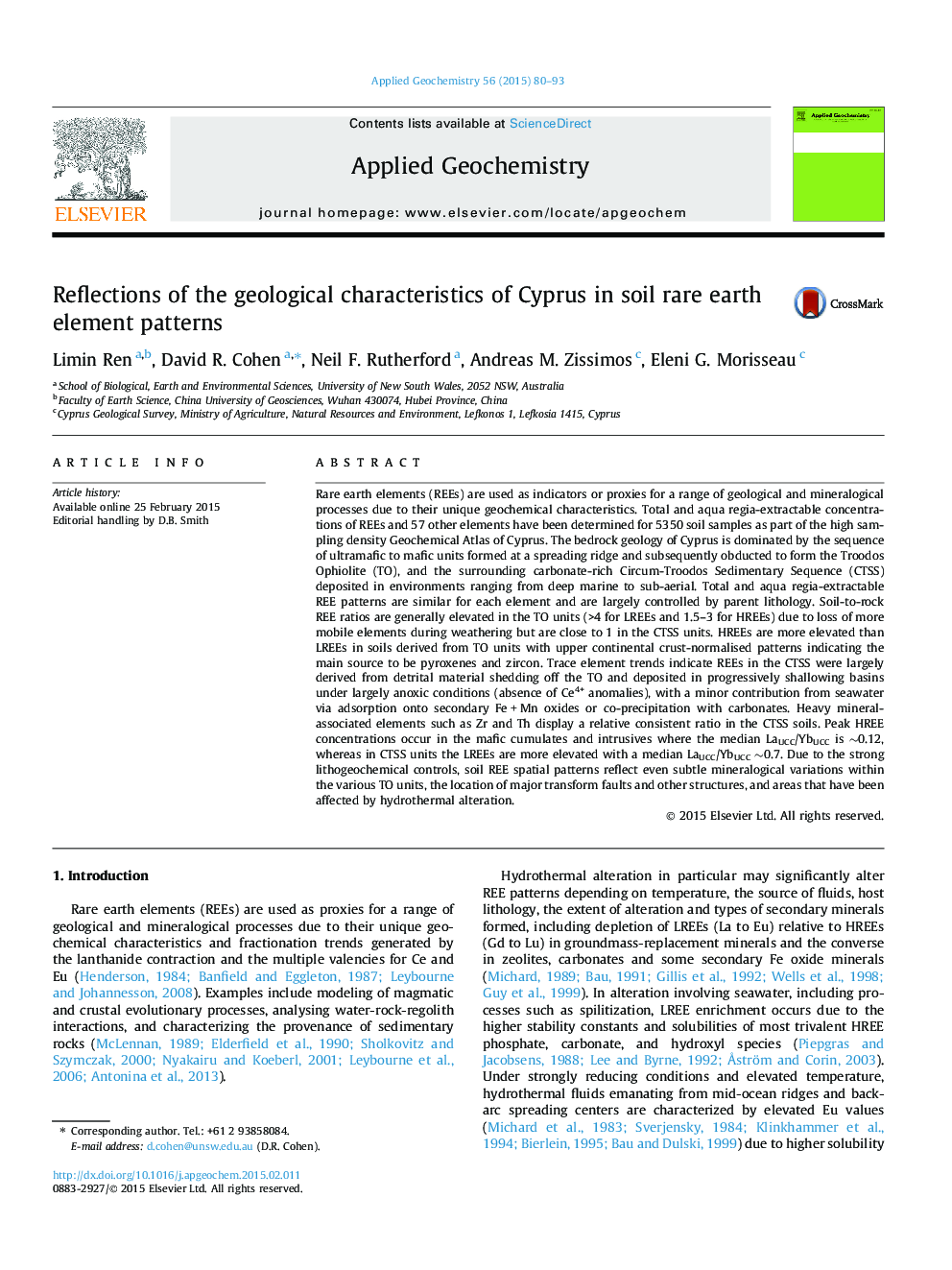| کد مقاله | کد نشریه | سال انتشار | مقاله انگلیسی | نسخه تمام متن |
|---|---|---|---|---|
| 4435705 | 1620235 | 2015 | 14 صفحه PDF | دانلود رایگان |
• REE patterns in the soils of Cyprus are dominated by parent lithology and indicate low REE mobility during weathering.
• REE in the Troodos Ophiolite are mainly derived from pyroxene and zircon and are HREE-enriched.
• Circum-Troodos Sedimentary Succession carbonate REE are mainly derived from continental crust detritus and are LREE-enriched.
• Hydrothermal alteration along major faults and other structural features is reflected in soil REE patterns.
Rare earth elements (REEs) are used as indicators or proxies for a range of geological and mineralogical processes due to their unique geochemical characteristics. Total and aqua regia-extractable concentrations of REEs and 57 other elements have been determined for 5350 soil samples as part of the high sampling density Geochemical Atlas of Cyprus. The bedrock geology of Cyprus is dominated by the sequence of ultramafic to mafic units formed at a spreading ridge and subsequently obducted to form the Troodos Ophiolite (TO), and the surrounding carbonate-rich Circum-Troodos Sedimentary Sequence (CTSS) deposited in environments ranging from deep marine to sub-aerial. Total and aqua regia-extractable REE patterns are similar for each element and are largely controlled by parent lithology. Soil-to-rock REE ratios are generally elevated in the TO units (>4 for LREEs and 1.5–3 for HREEs) due to loss of more mobile elements during weathering but are close to 1 in the CTSS units. HREEs are more elevated than LREEs in soils derived from TO units with upper continental crust-normalised patterns indicating the main source to be pyroxenes and zircon. Trace element trends indicate REEs in the CTSS were largely derived from detrital material shedding off the TO and deposited in progressively shallowing basins under largely anoxic conditions (absence of Ce4+ anomalies), with a minor contribution from seawater via adsorption onto secondary Fe + Mn oxides or co-precipitation with carbonates. Heavy mineral-associated elements such as Zr and Th display a relative consistent ratio in the CTSS soils. Peak HREE concentrations occur in the mafic cumulates and intrusives where the median LaUCC/YbUCC is ∼0.12, whereas in CTSS units the LREEs are more elevated with a median LaUCC/YbUCC ∼0.7. Due to the strong lithogeochemical controls, soil REE spatial patterns reflect even subtle mineralogical variations within the various TO units, the location of major transform faults and other structures, and areas that have been affected by hydrothermal alteration.
Figure optionsDownload as PowerPoint slide
Journal: Applied Geochemistry - Volume 56, May 2015, Pages 80–93
